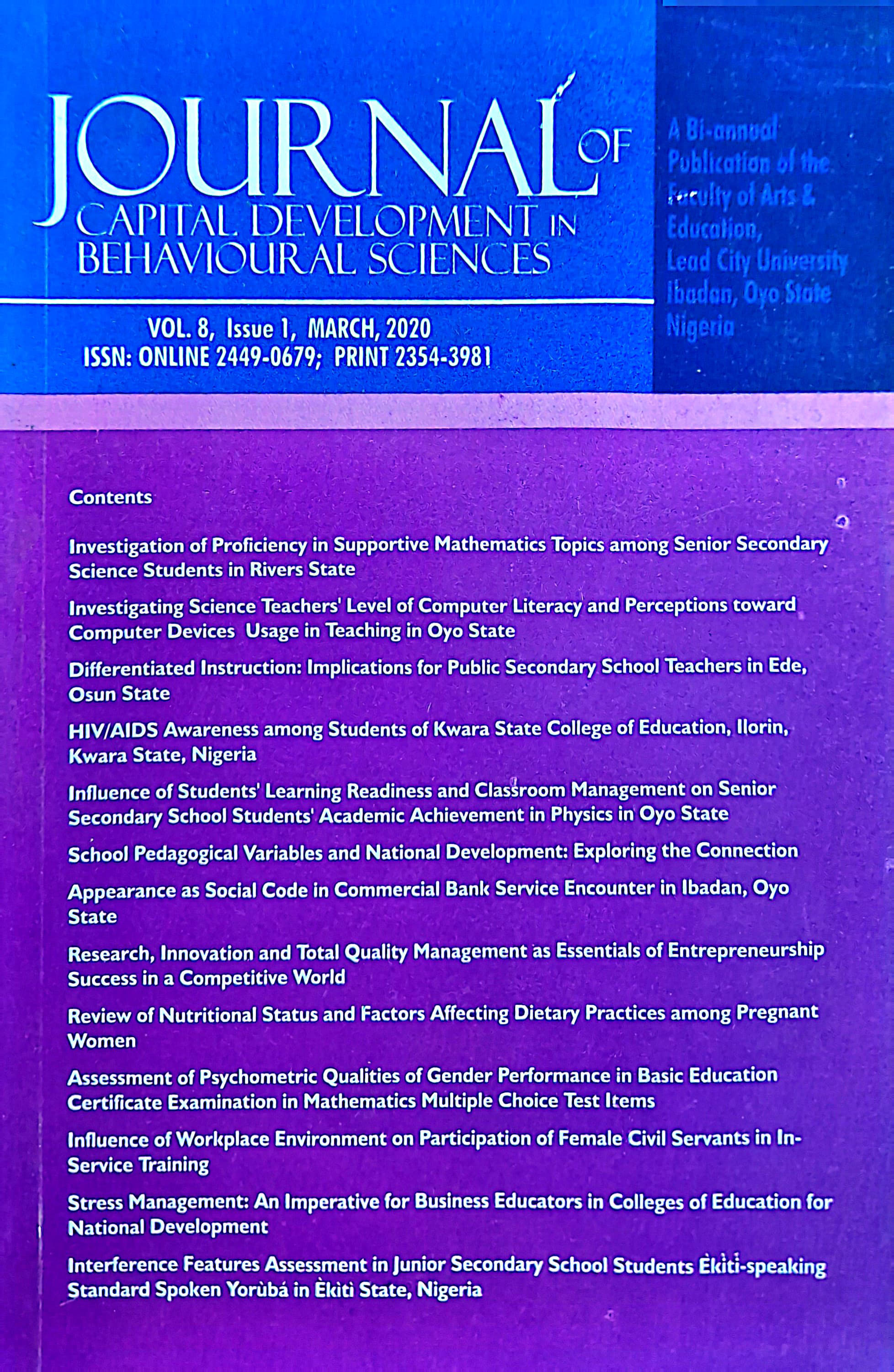Differentiated Instruction: Implications for Public Secondary School Teachers in Ede, Osun State
Keywords:
Differentiated instruction, teachers’ perspectives, implementation, Secondary Schools, Osun StateAbstract
Differentiation is a teaching philosophy that helps in addressing the needs of
students in heterogeneous classrooms. These are classrooms with students
from different backgrounds, learning disabilities, quick learners, slow learners,
special needs, gifted and others. With such diversity, something must be done
to meet the needs of all learners, not just the “one size fits all” approach so
that each student may learn and none is left behind. This study therefore
investigated teachers’ perspectives and implementation of differentiated
instruction in selected secondary schools in two local government arrears in
Ede, Osun State. The study used a survey type of descriptive research design.
The population consisted of all the 197 teachers in six secondary schools and
simple random sampling was used to select 112 teachers. Inferential
statistics of frequency counts and percentages were used to analyze the data
using SPSS version 20. Results showed that 67% of the respondents have a
clear and correct knowledge of the definition of differentiated instruction.
About 60-84% of respondents have a positive attitude towards the different
variables used to measure teachers’ perspectives. Only 9% of respondents
actually implemented differentiated instruction in the classroom. In
conclusion, findings revealed that many of the teachers sampled have
knowledge of what differentiated instruction is, but very few of them
implemented it in their classrooms. It is therefore recommended that
differentiated instruction should be tackled during professional development
workshops and teachers should be encouraged to differentiate their
instructions consistently so all the students may learn without leaving any one
behind.

